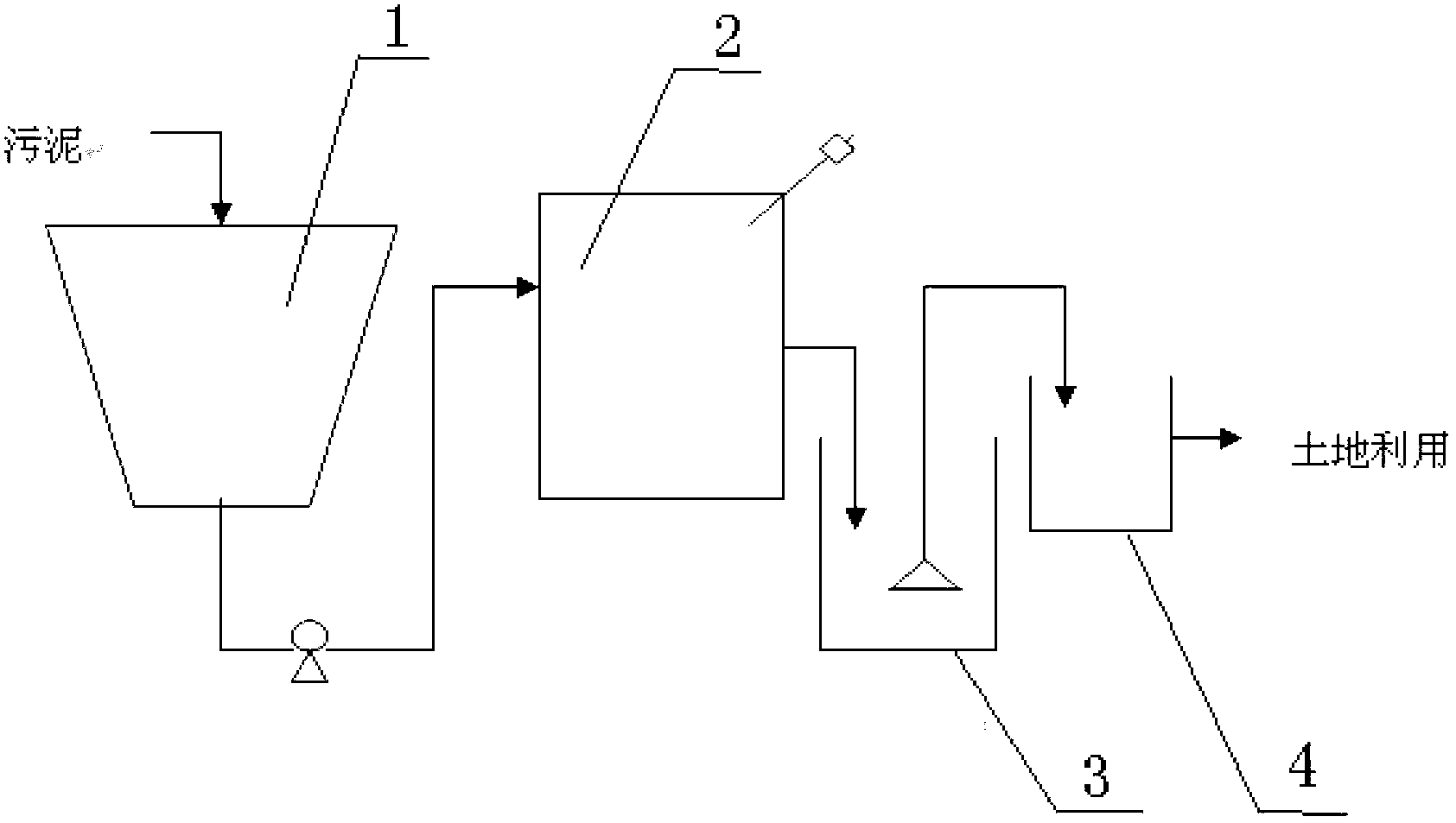Method for processing sludge by utilizing thermophile bacteria reinforcement ATAD (Autothermal Thermophilic Aerobic Digestion) process
A high-temperature aerobic digestion and self-heating technology, which is applied in biological sludge treatment and other fields, can solve the problems of few basic research reports and no breakthrough progress and results, and achieve the improvement of sludge degradation rate, efficiency and no waste. The effect of degree of harm
- Summary
- Abstract
- Description
- Claims
- Application Information
AI Technical Summary
Problems solved by technology
Method used
Image
Examples
Embodiment 1
[0027] A method for treating sludge using thermophilic bacteria to strengthen the self-heating high-temperature aerobic digestion process, the steps of the method are:
[0028] The solid content of the sludge to be treated is 5%, the VSS concentration is 30gL, and the weight is 100kg.
[0029] ⑴ Preparation of dominant bacterial agent:
[0030] Bacillus subtilis A2, Bacillus stearothermophilus M1, Bacillus pumilus T6 and Bacillus licheniformis N2 were mixed according to the proportion of 2:3:4:1 to prepare the dominant bacterial agent, and the concentration of the dominant bacterial agent was 10 9 individual / g, pH 7.
[0031] Bacillus subtilis A2 0.3Kg,
[0032] Bacillus stearothermophilus M1 0.45Kg,
[0033] Bacillus pumilus T6 0.6Kg,
[0034] Bacillus licheniformis N2 1.5Kg.
[0035] ⑵, pre-concentration treatment:
[0036] Transport the sludge to be treated to the pre-concentration tank 1 to stay for 5 hours;
[0037] ⑶ Self-heating high-temperature aerobic digestion...
Embodiment 2
[0044] A method for treating sludge using thermophilic bacteria to strengthen the self-heating high-temperature aerobic digestion process, the steps of the method are:
[0045] The solid content of the sludge to be treated is 8%, the VSS concentration is 40gL, and the weight is 500kg.
[0046] Preparation of dominant bacteria agent:
[0047] Bacillus subtilis A2, Bacillus stearothermophilus M1, Bacillus pumilus T6 and Bacillus licheniformis N2 were mixed according to the proportion of 3:3:2:2 to prepare the dominant bacterial agent, and the concentration of the dominant bacterial agent was 10 11 individual / g, pH 8.
[0048] Bacillus subtilis A2 4.8Kg,
[0049] Bacillus stearothermophilus M1 4.8Kg,
[0050] Bacillus pumilus T6 3.2Kg,
[0051] Bacillus licheniformis N2 3.2Kg.
[0052] ⑵, pre-concentration treatment:
[0053] Transport the sludge to be treated to the pre-thickening tank for 10 hours;
[0054] ⑶ Self-heating high-temperature aerobic digestion treatment:
...
Embodiment 3
[0061] A method for treating sludge using thermophilic bacteria to strengthen the self-heating high-temperature aerobic digestion process, the steps of the method are:
[0062] The solid content of the sludge to be treated is 6%, the VSS concentration is 48gL, and the weight is 2000kg.
[0063] ⑵ Preparation of dominant bacteria agent:
[0064] Bacillus subtilis A2, Bacillus stearothermophilus M1, Bacillus pumilus T6 and Bacillus licheniformis N2 were mixed according to the proportion of 2:2:3:3 to prepare the dominant bacterial agent, and the concentration of the dominant bacterial agent was 10 12 individual / g, pH 9.
[0065] Bacillus subtilis A2 20Kg,
[0066] Bacillus stearothermophilus M1 20Kg,
[0067] Bacillus pumilus T6 30Kg,
[0068] Bacillus licheniformis N2 30Kg.
[0069] ⑵, pre-concentration treatment:
[0070] Transport the sludge to be treated to the pre-thickening tank for 20 hours;
[0071] ⑶ Self-heating high-temperature aerobic digestion treatment:
[...
PUM
 Login to View More
Login to View More Abstract
Description
Claims
Application Information
 Login to View More
Login to View More - R&D
- Intellectual Property
- Life Sciences
- Materials
- Tech Scout
- Unparalleled Data Quality
- Higher Quality Content
- 60% Fewer Hallucinations
Browse by: Latest US Patents, China's latest patents, Technical Efficacy Thesaurus, Application Domain, Technology Topic, Popular Technical Reports.
© 2025 PatSnap. All rights reserved.Legal|Privacy policy|Modern Slavery Act Transparency Statement|Sitemap|About US| Contact US: help@patsnap.com



